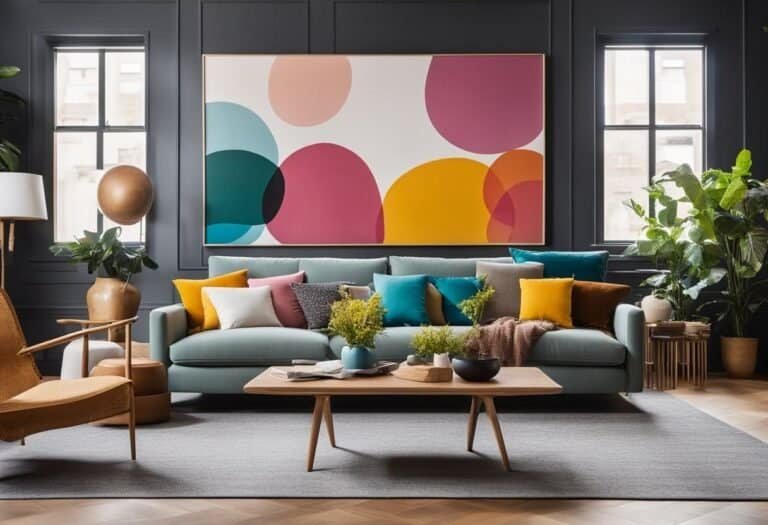How to Use Framed Art to Make Small Spaces Feel Bigger: Room Inspiration
Maybe you live in a cozy studio apartment and want to make it feel more like a roomy one-bed. Perhaps you’re trying to maximize the feeling of space in a single bedroom or a work-from-home area. Whatever your reason for wanting to increase the perceived size of your surroundings, we can help you do it. Believe it or not, it can all be down to how you display your framed artwork. Need proof and all of the examples? Keep scrolling for our how-to guide.
Consider The Space

Before deciding which framed artwork will work best in your space and make it feel larger overall, you’ll need to determine how you want the space to appear. Are you trying to make a narrow room look wider? Or are you planning to deceive the eye into thinking the ceilings are loftier than they are? Once you know this, you can work on sourcing the perfect pieces for your room. The key? Choose prints and paintings with strong, defined lines in whichever direction the room requires.
For example, let’s say you’re hoping to make a small living room look like it has a little more length to it. Horizontally framed pieces with defined horizontal lines within are going to force the eye to look along the full length of the room, giving the idea of a wider-than-usual space.
Meanwhile, if it’s the ceiling height you’re contending with, try the opposite. Vertical lines will draw the eye up and down the space so you’re concentrating on height rather than width. It may seem simple, but it’s an effective interior design tool that works not only for artwork but for furniture patterns, wallpapers, and soft furnishing designs too.
Contemplate Your Color Scheme

When choosing art for a small space to make it feel bigger, make sure you’re considering the current decor. You want to select framed artwork that coordinates well with everything already in the room. The color of the walls, the furniture, and any existing art. This works to create a cohesive space that doesn’t feel broken up and is therefore much more calming and spacially pleasing to the eye.
Another reason to consider color? Lighter hues will always reflect the light more prominently than darker ones. By making the room look and feel brighter in this way, you create the illusion of wide-open spaces. So, always look out for neutrally hued paintings and prints, and lightly textured canvases for smaller rooms.
Reflect The Outside World
There’s a reason rooms with windows seem automatically larger. It’s because we can see into the distance far beyond the constraints of the concrete walls. A similar principle is hanging mirrors in tiny spaces. It creates the illusion that there’s twice the amount of square footage than there actually might be.
With this in mind, we want to replicate this illusion with the framed artwork in our small spaces. Choose pieces that reflect the outside world such as images of sprawling meadows, colossal mountains, or the vast expanse of the ocean. You’ll be standing in a small space, but your eyes will be on a journey through scenes of the world outside.
Keep It Simple
It’s no secret that smaller rooms can become quickly overwhelmed by dark color palettes and busy patterns. They take over the space by demanding attention, causing you not to even perceive the space around them. This often-made mistake can quickly make little rooms feel even tinier.
To avoid this, look out for framed artwork in lighter colorways and with minimal intricacies. Think large sweeping paint strokes in tones of white and cream as opposed to repetitive patterns in multiple colorways. This lighter artwork will not only create a tranquil atmosphere and therefore the feeling of space, it will also reflect both natural and artificial light which will bounce around the room and help it to appear larger.
Don’t Be Afraid To Go Big
We know, a tiny room, it seems like tiny artwork is the answer. After all, you don’t want to overpower your space or make it feel cluttered in any way. However, we actually recommend the exact opposite when it comes to hanging artwork in your space.
Why? First off, large framed art pieces create a focal point. They draw the eye up towards the ceiling, and along the walls too, allowing the space to appear instantly larger. Secondly, much like our tip above, larger pieces in lighter hues will help reflect light and create a sense of open spaces. They trick the eye into thinking they’re looking at a vast open space as opposed to a confined one. So, forget the small frames and even smaller artwork inside. Be bold, go big, and your small space will thank you for it.








